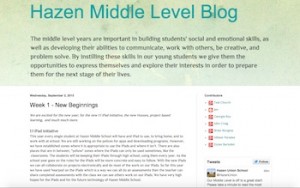Students write weekly emails to their families
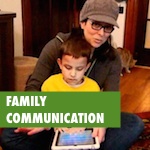 Lizzie Stockbridge, a 6th grade math teacher at Frederick H. Tuttle Middle School in South Burlington, Vermont, gives students 15 minutes every week to write an email home.
Lizzie Stockbridge, a 6th grade math teacher at Frederick H. Tuttle Middle School in South Burlington, Vermont, gives students 15 minutes every week to write an email home.
But when she started she had no idea how powerful this simple routine would turn out to be.
Unicorn stories!
As you recall last weeks event’s were brutal for Herald this week though they get even worse as I must have reader advisory for this because its so scary it will make you look around and wonder if there really was something moving around in that closet, so creepy it will make you want to run away and actually do that homework that you were told to do if you choose to keep reading you have been WARNED.
Intrigued? Well, read the whole email here as well as his father’s full response, which starts:
John, nearly all of your sentences in this week’s submission are run-ons, but all is forgiven. Why? Because this work is simply fabulous. Foreboding, tense and yet simultaneously humorous. You are juxtaposing genres here, with touches of theater, fable, horror and, dare I suggest, even poetry.
Lizzie’s students are really engaged in this routine. They use their weekly emails to express creativity, raise red flags, reflect on academic learning, process intense events — all sorts of things.
Melding student voice & family connections
Lizzie is a first-year teacher but she recognized the importance of connecting with families. And she knew that the key was to follow the lead of students to make sure it was meaningful.
At the end of the first week of school, students hadn’t yet delved into the math curriculum. When Lizzie read the first set of emails, she found that “they were just so excited about everything that had happened. Before school, after school, how there’s sports here now, how there’s clubs, blah, blah, blah. All the different teachers that they talked to. … Once I saw how invested they were in these other things, I just rolled with it.”
That’s responsiveness. And her instinct to let her students lead planted the seeds of the good things to come.
How does it work?
There are a few simple components to Lizzie’s approach.
- The gift of time: Students write for 15 minutes on Fridays. Lizzie sets a timer and students are asked to reflect on their week. Otherwise there are no constraints on topic or format. Some students use speech-to-text and some even use emojis rather than formal writing.
- Email buddies: Each student has at least one “email buddy” to serve as their authentic audience. Lizzie had originally thought she would require the email to go to somebody in the home, but she quickly realized that this didn’t work for everybody. Lizzie makes sure that every student has at least one person to email. For a couple of students this meant connecting them with an external buddy who had some time on his hands: Lizzie’s father. And a few students chose to email teachers within the school with whom they have close relationships.
- Responses encouraged: Lizzie periodically reminds email buddies that responding makes a big difference for students’ buy-in. When students do receive a response: “It’s clear that they’re excited about sending the emails and the parents who respond often start the email by saying, ‘I love your Friday emails. They brighten my day.’ Then I hear the kids come in and they’re like, ‘They got my email. We talked about this. We talked about that,’ which is great.
- Teacher CC’d: Lizzie receives all of the emails as well. She skims them over the weekend. “I usually do it on Saturday morning and I’m just sitting there on my computer like, ‘…That’s so cute.’ Yes, it’s nice, yes.” This part is key. So many positive things flow from the fact that Lizzie takes the time to look through the emails.
8 positive impacts of weekly emails
In addition to strengthening family communication, here are eight more benefits of students writing weekly emails home.
1. Teacher student relationships
Lizzie values learning about her students. This was big part of the reason why she altered her original math-focused email plan.
When I saw how they enjoy me talking to them on Mondays being like, “Oh, how did that football game go?” Like, “What? You know I played football? You read my email!” Which is really cool. Instead if I’m like, “How did ratios go last week in Math?” They’re like, “I don’t want to talk to you about this.” That was my major switch.
As a former math teacher, I was always jealous of ELA teachers who learned so much from students’ writing. The weekly emails do this for Lizzie.
2. Curricular relevance
Lizzie uses what she learns to directly support math learning as well.
It makes teaching math so much easier to me. Because if I notice the kids not getting it, I can make connections. “Okay, I know that you have watched Spiderman this past weekend because I saw it in your email.” And so I’m like, “Okay, what if Spiderman needed to save someone and they needed – what do they need to make the suit? …when I ask them to create their own problems, they can easily do it and they connect it to things that are going on outside of the class. Where I feel like last year if I ever ask my students to create anything, it would just be surface level class pencils to markers, but now, I feel like they know that they can talk to me about everything that’s going on because they know that I read it.
3. Crisis prevention & support
In several cases, Lizzie has come across information that was helpful to her team mates for supporting a student.
It helps in other classes, I noticed, because I found some emails, some red flag emails, and I immediately just contact the team or I contact whoever needs to be contacted. Also, for kids who shut down in class, they don’t tell us anything but then they’ll email about it. It’s nice to see that I can see what they’re thinking without them having to verbally tell me.
In one case a student noted that “my teachers hate me.” Lizzie notified her teammates and they talked to the student about it. The positive change was immediate. “She’s like a completely different kid. She comes in all bubbly and says hello to us every day now.” Listening is a powerful strategy and the emails give students another venue for voice.
4. Students connecting with their families
Lizzie was hoping that students and families would talk about school more at home due to the Friday emails. Her action research suggests a moderate shift based on parent survey responses.
Lizzie did see some interesting exchanges however:
A lot of students think ahead to their weekend. …they often talk about what they hoped to happen in the weekend. They send a list home of things that they want to happen. … It’s something they usually send an ask home of, “Can we eat popcorn while we watch our movie?” Or, “Can we watch this movie instead of that movie? Could we go outside? Can we go sledding? Could we…” It varies, but they are usually sending a list and then asking something of the people they send their emails to.
Kids getting a jumpstart on weekend negotiations suggests that they saw this as a legitimate communication tool for the stuff they care about.
5. Student learn life skills
Lizzie was amazed at how little her 6th graders knew about the tech skills related to emailing. Students needed to learn how to use Outlook, how to create a signature, how to enter email addresses, and how to access responses.
It became apparent several months into the school year that she had forgot one important aspect. A parent pleaded, “Can you please teach them how to reply?” Students had been creating new emails each week. Contributing to an ongoing threaded conversation is certainly a 21st Century life skill!
6. Student reflection
Lizzie framed the emails as a form of reflection:
I do call it an email reflection, and so now when they hear the word reflection, I think that they are correlating the, “Okay, now I have to process what I have done.” I don’t know if it’s true in all cases, but I’ve noticed that whenever I say reflection to them, they know exactly what’s expected of them.
In some cases students were focusing their reflection on academic learning. In many cases they were just thinking through the day-to-day tribulations of young adolescence.
I’m thinking that it’s a way for them to process what has happened to them this week, and if that is school related or if that’s something outside of school, that’s up to them, but taking that time to think about what they have done for the week or what they have done for the hour is really important.
In a school-wide survey, Lizzie’s team received positive responses relative to other teams. Parents were impressed with the family communication and students were enthusiastic about reflection. Lizzie and her team mates consider the Friday emails to be an important contributor to the encouraging feedback.
7. Kids like it
If Lizzie has to skip a Friday, she gets a lot of push back from students. Students sometimes finish their emails in study hall. And students have sent their Friday email when they were sick or traveling.
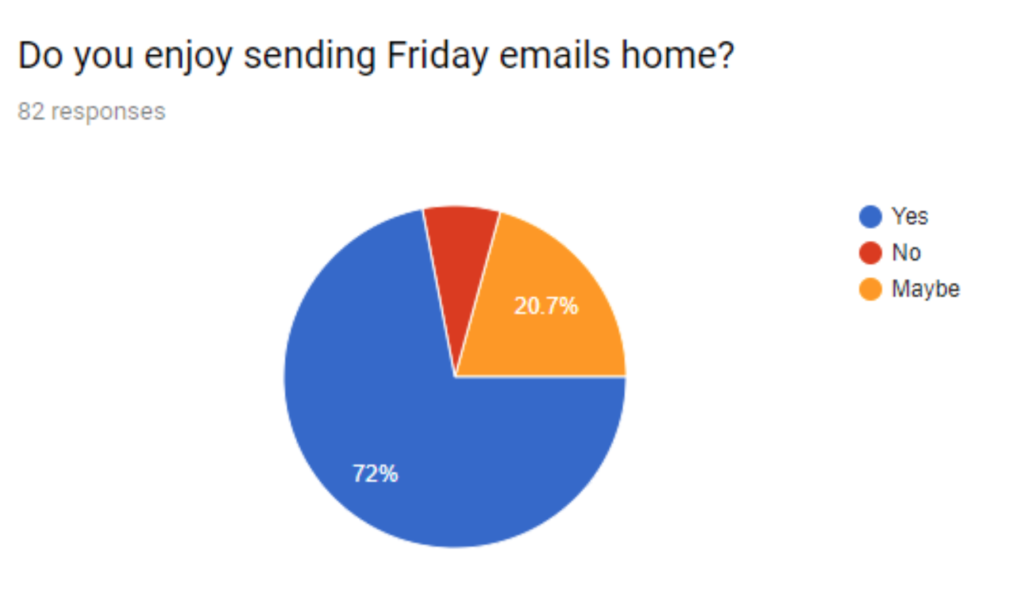
Some students have gotten really creative. One student created the idea of “Girl Power Industries,” where her weekly learning is framed as world-changing. And if you check out a typical email from her then you might believe that this girl is indeed likely to change the world!
8. Families like it
Lizzie has received good feedback from families as well.
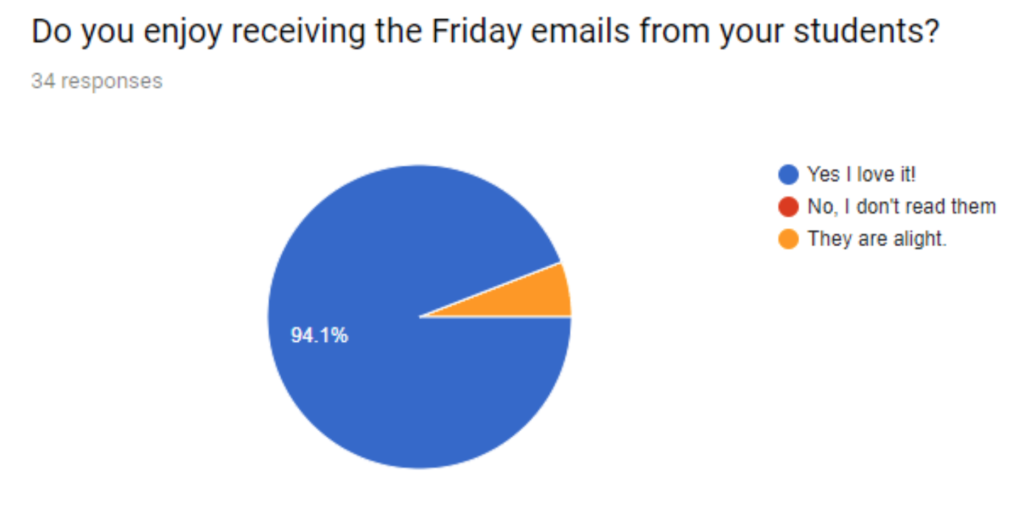 This comment on the survey seems to capture the parental gratitude:
This comment on the survey seems to capture the parental gratitude:
!["Thank you so much for taking the time to create the weekly reflections with the kids. It's a wonderful glimpse into our child's week through his own words and memories. It seems harder these days to tease conversation about school out of him, this really gets the ball rolling around the dinner table. Thank you and keep them coming! [redacted]](https://tiie.w3.uvm.edu/blog/wp-content/uploads/2019/03/Screen-Shot-2019-03-11-at-1.57.58-PM-1024x123.png)
And Lizzie has felt the difference in her interactions with families.
Parents are constantly reaching out to me. Every week, I at least have five parents reaching out to me. It can be simple things, concerns, or just check-ins … When I see parents and introduce myself. They’re like, “Oh no, we know who you are.” Immediately they’re like, “Yes. We know you. You’re the math teacher. We know exactly who you are. We hear about you and see your emails,” which is really cool.
It’s so important to be seen and to be known. For teachers, for students, and for their families. Sometimes the simplest routines can help us be human.
Action Research
Please check out the screencast below to see Lizzie’s presentation at the Middle Grades Conference on her approach, her action research, and her findings.
How could you empower students to reflect via email?
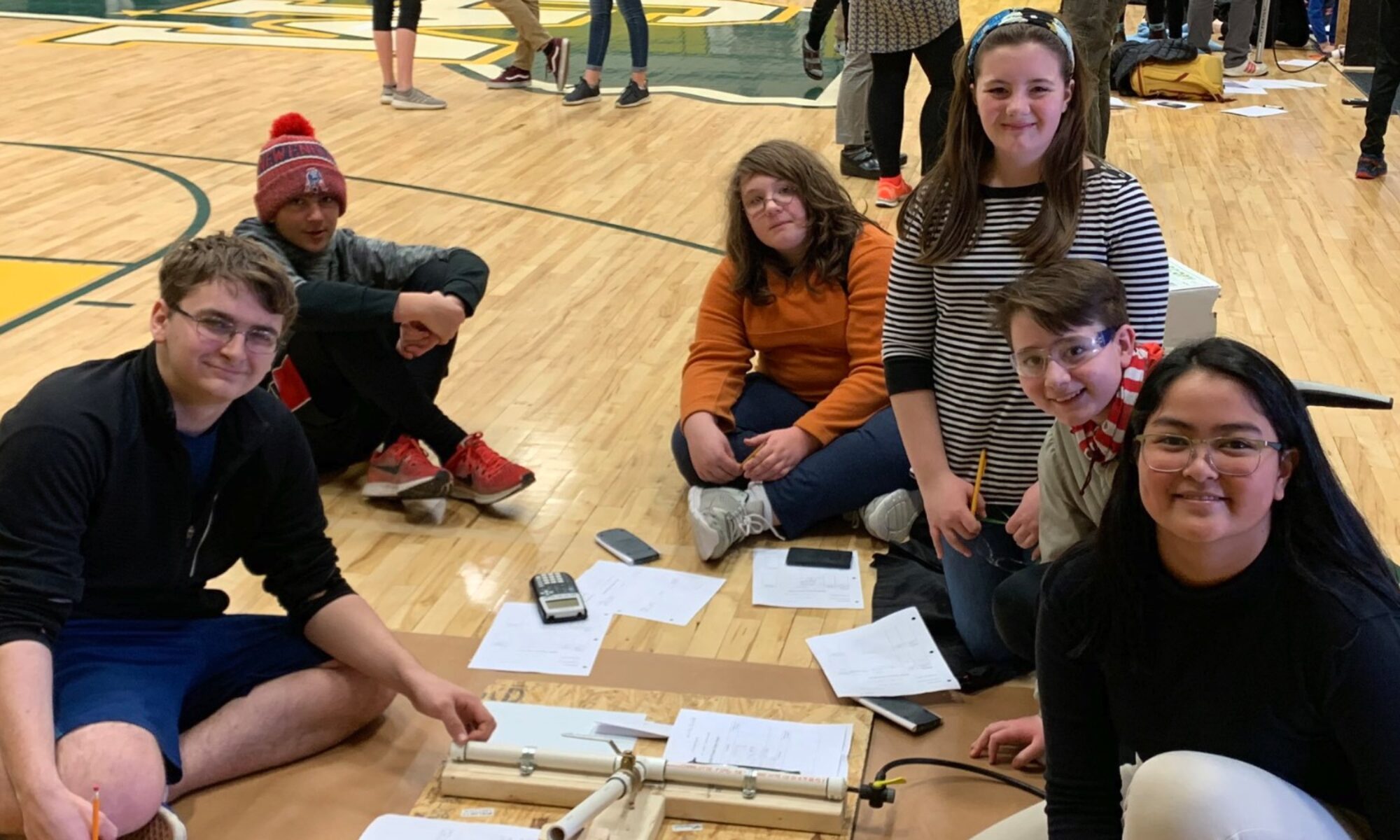


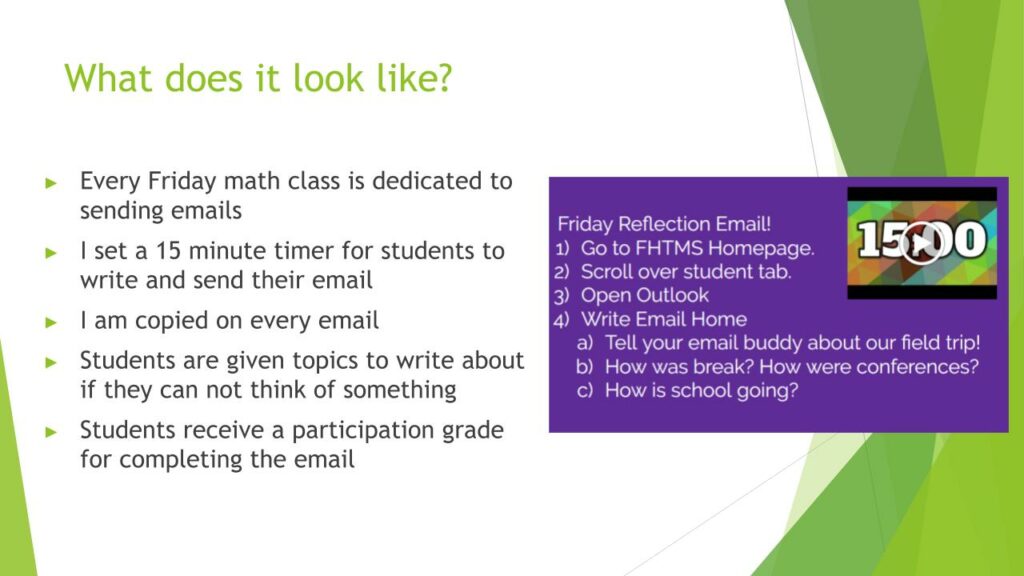
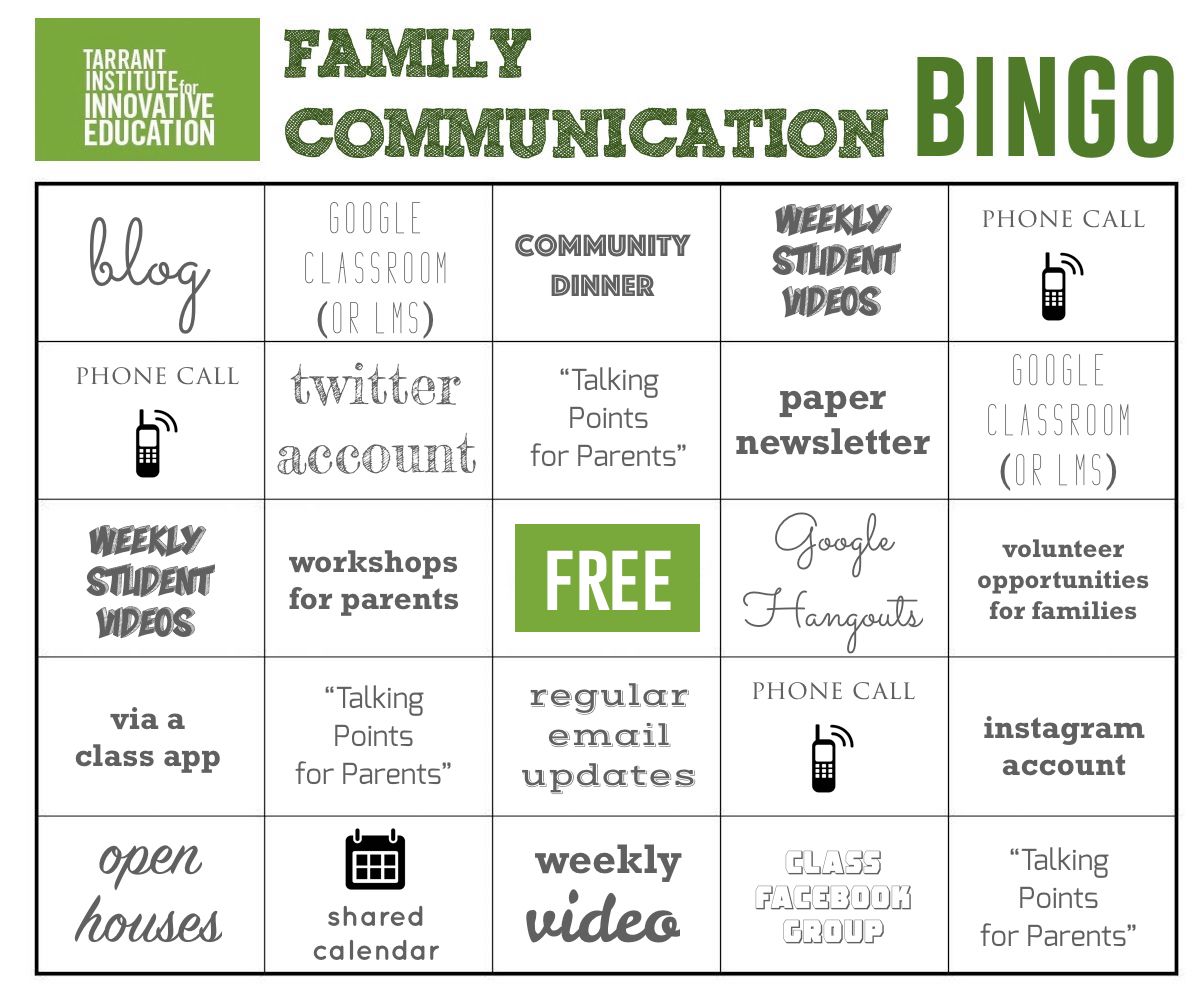
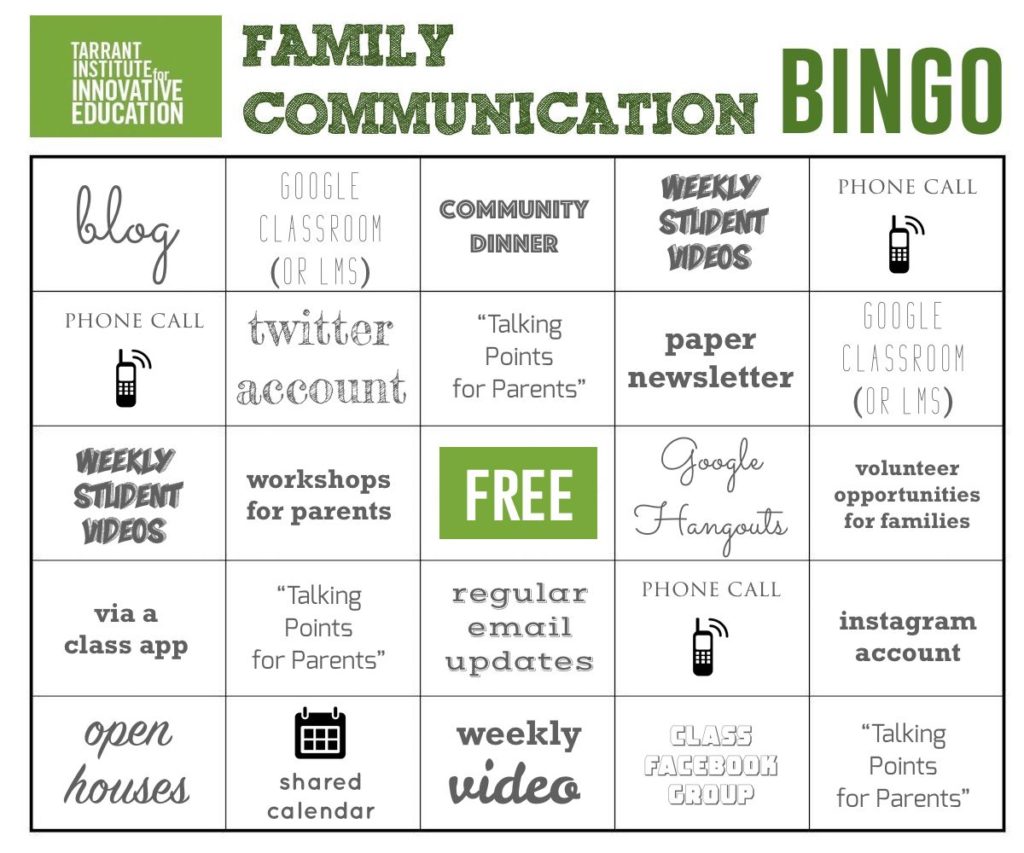
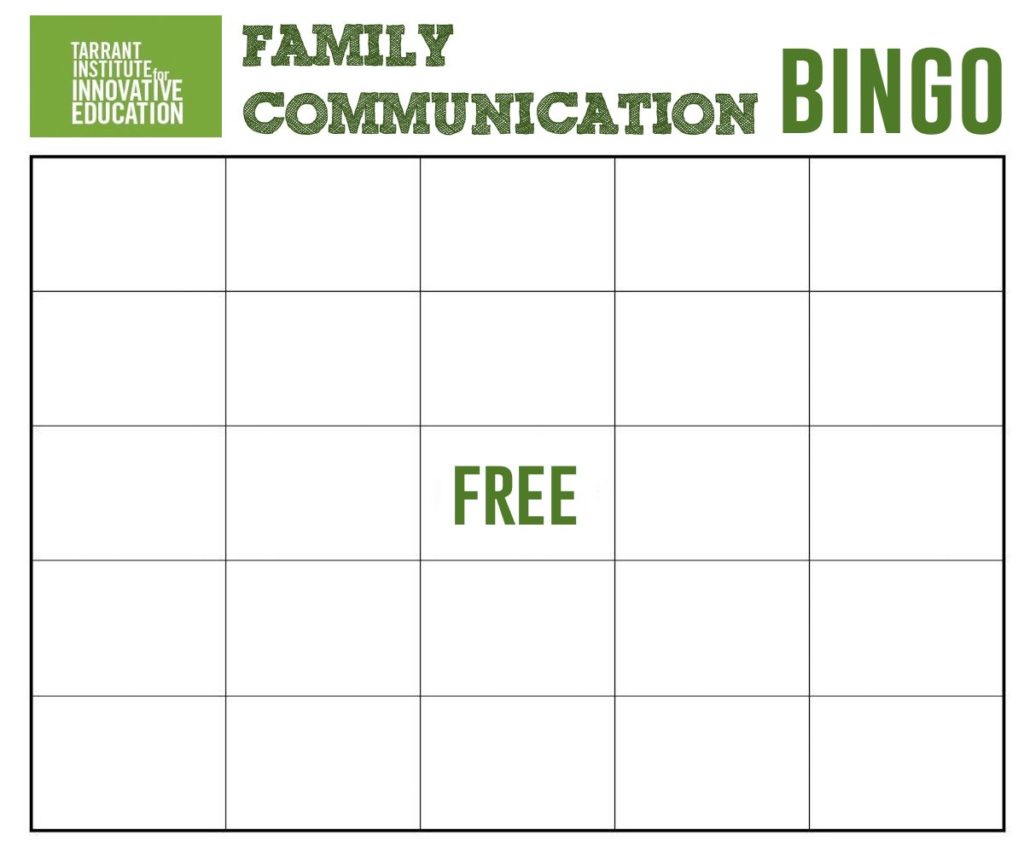




 In recent decades, schools have turned the table on the traditional parent-teacher conference. More and more, schools are engaging the student and putting him or her in the driver’s seat at this learning conversation. A student-led conference (SLC) can be a beautiful thing. But parents sometimes struggle to understand them. They are, after all, a complete departure from what most parents experienced as kids.
In recent decades, schools have turned the table on the traditional parent-teacher conference. More and more, schools are engaging the student and putting him or her in the driver’s seat at this learning conversation. A student-led conference (SLC) can be a beautiful thing. But parents sometimes struggle to understand them. They are, after all, a complete departure from what most parents experienced as kids.



